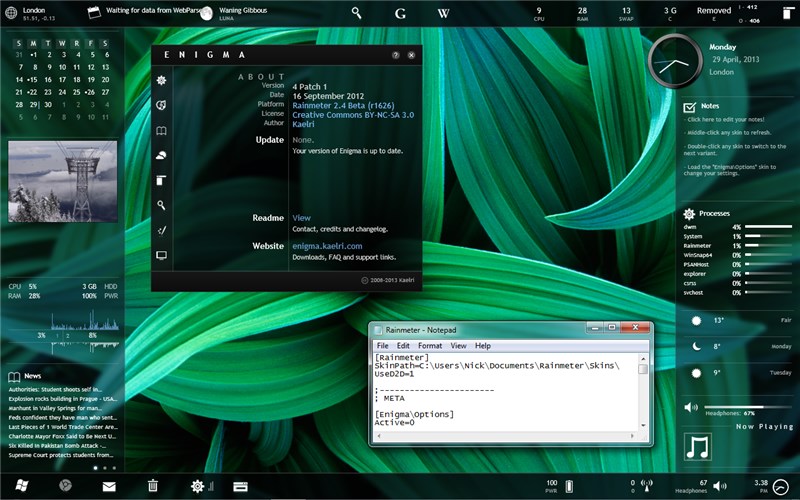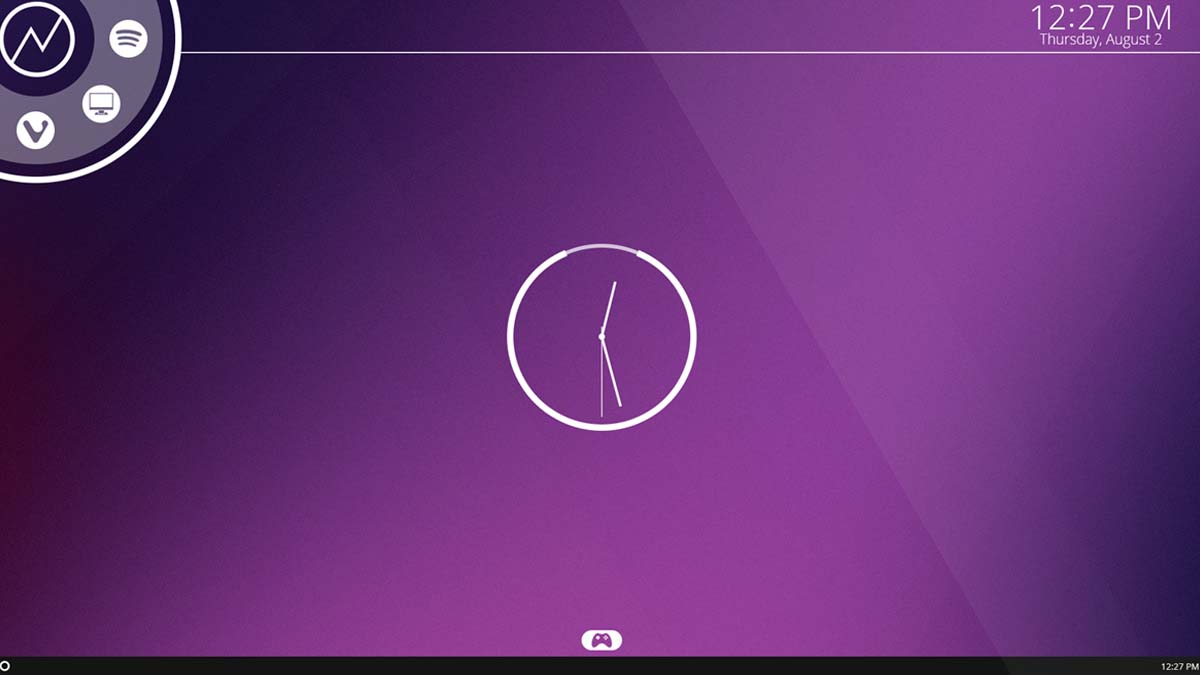- Rainmeter Skins Mac Os Big Sur
- Rainmeter Mac Os Big Sur Skin
- Rainmeter Mac Os Skin
- Rainmeter Cool Skins
- Mac Dock For Rainmeter
- Mac Os Rainmeter Skin
Rainmeter is one of the popular desktop customization software available for Windows operating system. Take help of skins and themes to enhance your desktop experience. Even some skins help you in showing beneficial information at a glimpse. Sep 08, 2018 Get that MacOS look on Windows easily. Rainmeter is a desktop customization tool that was first released back in 2001 and is written in C. It is currently the most popular windows customization tool out there and that’s quite understandable given its vast capabilities. Using rainmeter skins, you can display information that ranges from time/date, system resources monitoring. With a cool looking abstract wallpaper and widgets, Enmon is a Rainmeter skin that is eye-catching and gorgeous. It is a custom scalable skin which you can resize using your mouse pointer. The visualizer and meter ring used in the theme can be used to indicate Cpu, Ram, Hdd.
Rainmeter is a lightweight application for customizing your Windows desktop. Rainmeter works by installing community made ‘skins’ or creating your own, many of which can change how the desktop works with widgets like app launchers, RSS and email readers, calendars, weather reports, and many others. It has been around since Windows XP, where it was used as a tool for displaying basic info on the desktop, but has since gained a large community following which has produced high quality skins to completely change your desktop experience.
Here at rainmeterui.com, we provide a safe and organized archive for only the best Rainmeter skins available for download which most certainly are worth your time online. All the Rainmeter skins featured on this website are grouped and organized according to relevant categories and tags. We also provide Rainmeter tutorials, Rainmeter resources. Rainmeter allows you to display customizable skins on your desktop, from hardware usage meters to fully functional audio visualizers. You are only limited by your imagination and creativity. Rainmeter is open source software distributed free of charge under the terms of the GNU GPL v2 license. Rainmeter allows you to display customizable skins on your desktop, from hardware usage meters to fully functional audio visualizers. You are only limited by your imagination and creativity. Rainmeter is open source software distributed free of charge under the terms of the GNU GPL v2 license. 678+ RAINMETER SKINS collections for Windows 10/8/7. Download and apply free Rainmeter skins or themes. Customize you desktop and make it personal looks.
You can download the latest beta and final releases below.
Rainmeter will run on Windows 7 (Service Pack 1 and Platform Update required) and above (8/10).
Unfortunately Rainmeter does not support Mac and Linux, however you can use desktop customizing alternatives, such as Geektool for Mac and Conky for Linux machines.
The installation will do the following:
- Install the program to the default or selected Destination folder.
- Create a Windows file association for the .rmskin file extension and the Rainmeter Skin Installer.
- Create Windows Start menu item for Rainmeter.
- Create Windows Start menu item for Startup/Rainmeter, so Rainmeter starts with Windows. This may be disabled by unchecking Launch Rainmeter on startup.
- Launch Rainmeter at the end of the installation.
Skins and settings folders will be created in the default file locations when Rainmeter is first run.
Note: Rainmeter can be uninstalled using the Add or Remove programs function in Windows.
To run Rainmeter from a single folder, so it can be copied to another computer or run directly from a removable drive, select Portable installation during the install process and browse to the desired installation folder. No changes to the Windows Registry or Start menu will be made. All program, skins and settings folders and files will remain in the selected program folder.
Program folder:C:Program FilesRainmeter
Rainmeter Skins Mac Os Big Sur
Download Rainmeter Skins
Skins folder:C:UsersYourNameDocumentsRainmeterSkins1

Settings and Layouts folder:C:UsersYourNameAppdataRoamingRainmeter1
1. “YourName” is an example.
All skins, themes, launchers and widgets can be download on the official rainmeter skins website. Alternatively you download or request from the active community on deviantart and rainmeter subreddit
There are two ways of installing Rainmeter skins downloaded from the internet:
- Automatically : If the skin is in the .rmskin format.
In short : Double-click the .rmskin file, click Install. - Manually : If the file is a .zip/.rar/.7z archive.
In short : Unzip the archive or copy to the Rainmeter Skins folder. Refresh Rainmeter.
Rainmeter Mac Os Big Sur Skin
Skins in the Rainmeter Skin Packager (.rmskin) format can be easily and automatically installed with the Rainmeter Skin Installer. During a normal Rainmeter installation, the .rmskin extension is associated in Windows with the Skin Installer program, and simply double-clicking the file will install it in Rainmeter.
Before Rainmeter 1.3, most skins had to be unzipped and moved to the Skins folder by hand. All versions of Rainmeter are 100% backwards-compatible, so these older skins will still work just fine. Here is how to install them:
First of all, if a skin comes in an archive, such as a ZIP, RAR or 7Z file, software is needed to “extract” them. 7-Zip is one of the popular choices, since it can handle almost any archive type. After installing the software, right-click the archive in Explorer to extract it.
The archive may include a readme.txt file with further instructions. If not, look for a folder with the same name as the skin – it might be inside another folder that is actually called “Skins”. Move the folder to the Rainmeter “Skins” folder:
C:UsersYourNameDocumentsRainmeterSkins1
1. “YourName” is an example.
Finally, right-click the Rainmeter Windows Notification area icon and select Refresh all. The new skins will now be available to load from the Manage window or context menus.
Brother hl 3170cdw mac software free. Rainmeter is a lightweight application for customizing your Windows desktop. Rainmeter works by installing community made ‘skins’ or creating your own, many of which can change how the desktop works with widgets like app launchers, RSS and email readers, calendars, weather reports, and many others. It has been around since Windows XP, where it was used as a tool for displaying basic info on the desktop, but has since gained a large community following which has produced high quality skins to completely change your desktop experience.
You can download the latest beta and final releases below.

Rainmeter will run on Windows 7 (Service Pack 1 and Platform Update required) and above (8/10).
Unfortunately Rainmeter does not support Mac and Linux, however you can use desktop customizing alternatives, such as Geektool for Mac and Conky for Linux machines.

The installation will do the following:
- Install the program to the default or selected Destination folder.
- Create a Windows file association for the .rmskin file extension and the Rainmeter Skin Installer.
- Create Windows Start menu item for Rainmeter.
- Create Windows Start menu item for Startup/Rainmeter, so Rainmeter starts with Windows. This may be disabled by unchecking Launch Rainmeter on startup.
- Launch Rainmeter at the end of the installation.
How To Download Rainmeter On Mac
Skins and settings folders will be created in the default file locations when Rainmeter is first run.
Note: Rainmeter can be uninstalled using the Add or Remove programs function in Windows.
To run Rainmeter from a single folder, so it can be copied to another computer or run directly from a removable drive, select Portable installation during the install process and browse to the desired installation folder. No changes to the Windows Registry or Start menu will be made. All program, skins and settings folders and files will remain in the selected program folder.
Program folder:C:Program FilesRainmeter
Skins folder:C:UsersYourNameDocumentsRainmeterSkins1
Rainmeter Mac Os Skin
Settings and Layouts folder:C:UsersYourNameAppdataRoamingRainmeter1
Rainmeter Cool Skins
1. “YourName” is an example.
All skins, themes, launchers and widgets can be download on the official rainmeter skins website. Alternatively you download or request from the active community on deviantart and rainmeter subreddit
There are two ways of installing Rainmeter skins downloaded from the internet:
Mac Dock For Rainmeter
- Automatically : If the skin is in the .rmskin format.
In short : Double-click the .rmskin file, click Install. - Manually : If the file is a .zip/.rar/.7z archive.
In short : Unzip the archive or copy to the Rainmeter Skins folder. Refresh Rainmeter.
Skins in the Rainmeter Skin Packager (.rmskin) format can be easily and automatically installed with the Rainmeter Skin Installer. During a normal Rainmeter installation, the .rmskin extension is associated in Windows with the Skin Installer program, and simply double-clicking the file will install it in Rainmeter.
Mac Os Rainmeter Skin
Before Rainmeter 1.3, most skins had to be unzipped and moved to the Skins folder by hand. All versions of Rainmeter are 100% backwards-compatible, so these older skins will still work just fine. Here is how to install them:
First of all, if a skin comes in an archive, such as a ZIP, RAR or 7Z file, software is needed to “extract” them. 7-Zip is one of the popular choices, since it can handle almost any archive type. After installing the software, right-click the archive in Explorer to extract it.
The archive may include a readme.txt file with further instructions. If not, look for a folder with the same name as the skin – it might be inside another folder that is actually called “Skins”. Move the folder to the Rainmeter “Skins” folder:
C:UsersYourNameDocumentsRainmeterSkins1
1. “YourName” is an example.

Finally, right-click the Rainmeter Windows Notification area icon and select Refresh all. The new skins will now be available to load from the Manage window or context menus.